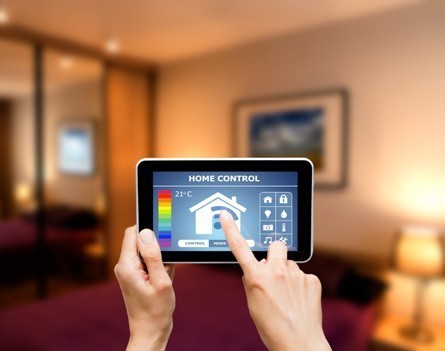
Imagine a world that is even more connected technologically than ours today.
That’s what the Australian Communications and Media Authority (ACMA) has done this week with a very timely occasional paper on the Internet of Things (IoT). As well as identifying issues of direct concern to the ACMA, the paper also includes an overview of the technology and its capabilities.
The IoT is the bringing together of a very large numbers of devices, data and computing power through the internet. The internet at the moment usually has a human at one or both ends of the communication. In the IoT, most communications will have sensors, actuators, databases or cloud-based computing process at either end.
It is the linking of data from a large numbers of devices to the tremendous computing power of the cloud that makes the IoT so interesting. Sensor networks and machine-to-machine communication have been around for quite some time now, but has mostly been over the cellular telephony network or over short range, mesh networks such as ZigBee.
Generally, the processing of data generated by these networks has been reasonably straightforward, such as pollution monitoring or device tracking. But the linking of these devices to the internet opens up many new possibilities. Large scale deployment of sensor networks will generate vast amounts of data which can be moved via the internet to be processed using the huge resources of cloud computing.
Many applications
There are potential applications in health, aged care, infrastructure, transport, emergency services among others. Terms such as “smart cities” and “smart infrastructure” have been coined to refer to the capabilities of combining large scale sensor networks with cloud computing.
So for example, smoke alarms might be integrated with fire services. A rapid increase in the number of alarms may indicate (for example) an explosion in a factory. Data from the alarms along with the sequence and pattern of the alarms might be able to be processed to give information as to the nature, location and extent of the explosion.
The ACMA paper has some discussion of projections for the take up of the technology. These seem extraordinary. There is a reference to a recent McKinsey report that estimates worldwide productivity gains of US$11.1-trillion a year by 2025.
Catherine Livingstone, chair of Telstra, believes that the changes brought by IoT will dwarf those we saw with the fixed line internet in the mid-1990s and the mobile internet in the mid-2000s.
Billions more connections
What is even more extraordinary is the expected speed of the take up of these technologies. Cisco expects 50-billion devices to be connected to the internet by 2020 compared to the 15-billion currently connected.
There is certainly a great deal of activity in this area and consequently, there is some urgency in making sure that there is a suitable regulatory framework for it. This is what the paper deals with.
The paper is an invitation for interested parties to comment on ACMA’s plans for the area. The most interesting part of the paper is that describing ACMA’s current, medium term and long term IoT focus.
Current concerns include availability of spectrum, mobile numbers and information exchange. Spectrum refers to the frequency ranges available for wireless communication of the sensors and actuators attached to the IoT.
The precursor to the IoT is Machine to Machine Communications (M2M). This has relied primarily on the mobile telephone network. Back in 2012 ACMA made available a new mobile number range (05) to supplement the existing (04) range. If there is an explosion in the number of devices there may need to be additional number ranges.
Short range sensor networks make use of unlicensed spectrum such as that used by Wi-Fi. The paper looks at the suitability of existing unlicensed spectrum arrangements and the possibility of new spectrum in the 6GHz range being made available. It also identifies the emergence of long range communications (such as LoRa) using unlicensed spectrum.
The other area is how “harms” can be addressed. In this context “harms” refers to issues related to breaches of privacy, security and other problems that we may not yet understand. Managing “harms” involves the exchange of information between parties. For example, dealing with a computer that is infected by malware may need cooperative behaviour between a number of parties. How will that be done in the IoT world?
Longer term concerns identified in the paper include network security and reliability as well as the capabilities of businesses and consumers to manage their devices and information.
All in all, the paper is a welcome addition to discussion on an increasingly important area.
![]()
Philip Branch is a Senior Lecturer in Telecommunications at Swinburne University of Technology.
This article was originally published on The Conversation. Read the original article.


COMMENTS
SmartCompany is committed to hosting lively discussions. Help us keep the conversation useful, interesting and welcoming. We aim to publish comments quickly in the interest of promoting robust conversation, but we’re a small team and we deploy filters to protect against legal risk. Occasionally your comment may be held up while it is being reviewed, but we’re working as fast as we can to keep the conversation rolling.
The SmartCompany comment section is members-only content. Please subscribe to leave a comment.
The SmartCompany comment section is members-only content. Please login to leave a comment.